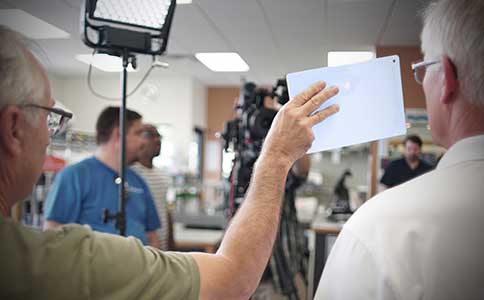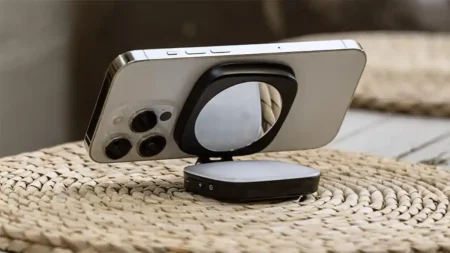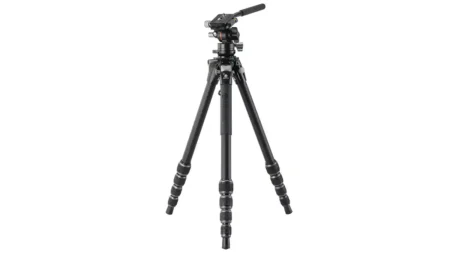In the age when most cameras have an Auto White Balance setting you could be forgiven for thinking that setting white balance for video is a simple flick of a switch and a quick turn of a dial, but it’s much more than that. In this tutorial we explain exactly what white balance is and examine all the options for setting and working with white balance while shooting video.
What you’ll learn
- What is white balance?
- What is colour temperature?
- Auto White Balance & camera setting options
- Manual white balance explained
- Why white balance is important
- The benefits of white balancing
What you’ll need
- A camera with, ideally, at least 4K shooting options
- A camera with AWB, custom and manual white balance settings
- A white card or Warm Card for setting manual white balance
- A shot list of your shoot, including lighting conditions for each shot
In a recent Camera Jabber video tutorial we discussed the best lighting for video and touched on colour temperature and Kelvin values… and white balance is a natural progression from those topics. To lift the lid on white balance we’ll examine what it is, why it is crucial for your shoots and how to effectively white balance your camera for video.
What is white balance in video?
White balance is a camera control that adjusts the camera’s colour sensitivity to match the prevailing colour of light. This can be outdoor light (which is ‘cooler’ and blue), indoor light (which is usually ‘warmer’ and red) or fluorescent light (which tends to be more green).
In essence, then it’s a case of colour balancing to ensure your camera is capturing colours that are natural to the human eye or, sometimes, unnatural if that is the effect you are after in your video.
What is colour temperature in video?
Colour temperature is a crucial consideration within white balance as all light sources have a specific measurement – in degrees Kelvin – on the colour temperature scale (which is known as the Kelvin scale, after its inventor, the mathematician and physicist William Kelvin).
On the Kelvin colour temperature scale each type of light has a numerical temperature – the lower the number, the warmer the light source and the higher the number, the cooler the light source. Here are the approximate colour temperature values of typical lighting conditions:
Overcast skies: 9000K to 10,000K
Shade: 6500K to 8000K
Sunlight: 6000K
Fluorescent lighting: 4000K to 5000K
Sunrises & sunsets: 3000K to 4000K
Household lighting: 2500K to 3500K
Candlelight: 1000K to 2000K
The human eye and brain automatically compensate for the colour temperature of light falling on an object. When you move from bright, blue-tinted sunlight to dim, yellow-tinted indoor lighting, your eye automatically adjusts to the different colour of light and changes your perception accordingly.
Unfortunately, even the most expensive cameras can’t automatically do what the human eye does, so we have to show our cameras what we want them to read as ‘white’ in any given scene.
For warmer colour temperatures cameras add in more blue, whilst for the cooler colour temperatures cameras add in more yellow. It is advisable for video shoots that you white balance manually to get the best, most accurate results.
![]()
What are the white balance settings on my camera?
As mentioned earlier many of today’s cameras feature an AWB feature. On the face of it this sounds great, but simply allowing the camera to make colour decisions for you when the AWB setting is on is not a ‘catch-all’ solution.
You still need to be acutely aware of the changes of light in any scene you’re shooting and consider what the white balance should be for each scene.
Depending on your make and model of camera white balance settings within cameras are often selectable via a series of icons and can also offer you the opportunity to set Custom White Balance for areas in a scene that need to be white. Many cameras will also let you save a handful of your Custom White Balance settings.
Using the Canon digital EOS white balance menus as an example, there are nine options, which are a mix of auto, presets and manual control. They are:
- AWB: this evaluates the scene and decides the most appropriate white point. It is fine if the colour temperature of light is between 3000K and 7000K, but if one colour dominates a scene, or there is no actual white for the meter to see, you can end up with a colour cast.
- Daylight setting: this is best for bright sunlight and balances at around 5200K.
- Shaded places: this colour temperature is around 7000K and is best for shooting in light shade rather than heavy shadow.
- Cloudy or hazy: this sets a colour temperature of around 6000K and is bets for days when the sun I behind the clouds.
- Tungsten setting: this ‘artificial lighting’ setting assumes a colour temperature of around 3200K and is suitable for most tungsten lamps that normally emit a yellow light.
- Fluorescent setting: this artificial light setting is around 4000K. But, beware, as there are six types of fluorescent lights each with a different colour temperature so this is no guarantee of accuracy.
- Flash setting: probably best used for stills, this is for a very white light with a colour temperature of around 6000K.
- Custom White Balance: this allows you to tell the camera which area in the scene is supposed to be white and the camera can calculate the required colour shift to make that area white. It then applies that shift to all colours in the scene to colour balance correctly.
- Kelvin settings: this enables you to manually set colour temperatures in Kelvin from 2500K up to 10,000K in 100K increments.
While Auto White Balance (AWB) is convenient, it is not always accurate and is prone to colour shifts, especially under mixed light sources. For the best results, pro filmmakers will almost always perform a fresh manual white balance any time that the lighting conditions change.

Using Manual White Balance in video
Manual white balance is a setting that allows camera operators to match the exact lighting used. It is the favoured method of shooting for pro filmmakers and is fairly easy to accomplish.
The cameraman generally shoots a ‘white card’ and presses a white balance button that adjusts the red, green and blue signals to the camera’s sensor so that the white card appears ‘white’ and exhibits no colour cast.
To determine what is white, the electronics in your camera must be shown a white object under the light you’ll be shooting in. This is ‘white balancing’ your camera, and, ideally, you should do a white balance every time that the lighting conditions change.
Before white balancing, you need to check the camera’s filter wheel to be sure you’re using the best filter for the current lighting conditions. Some camera makers advise to fill at least 80% of the frame with the white reference but anything less than a full screen can result in an incorrect white balance.
Select your white reference with care and remember to always carry a clean, rigid, white card or a Warm Card (see below for more on Warm Cards). Ideally, you should use the same reference white throughout a shoot.
Be careful when positioning the card and make sure it is held steady, that the primary source of light to which you want to balance is the only illumination falling on the card and that it avoids reflections. If the card is accidentally moved while the camera is white balancing you may pick up reflections of unwanted light.
The camera must be properly lined up with the card, and if it isn’t, the white balance values can vary from by several hundred degrees. Activate the white balance by pressing the button.
The camera may take a few seconds to complete the operation, after which you should get a message in the viewfinder telling you that the white balance has succeeded.
The camera will retain its current white balance until another white balance is performed. If the camera’s viewfinder message says that the white balance has failed, then you’ll need to find out why.
Some cameras will give you a clue such as ‘temperature too high’ (in which case change filters). Also check your aperture and focus, and try opening or closing the aperture a little.
The Importance of white balancing in video
It is especially important to alter white balance when moving between indoors and outdoor situations, and between rooms that are lit by different kinds of light sources.
During early morning and late evening, the daylight changes quickly and significantly. Although your eyes don’t always notice these changes, your camera will.
In any given location, and within a sequence of shots, or scene, you must strive to maintain consistency with your white balance. Knowing how often to white balance is mostly a matter of experience.
It’s worth noting that if your camera white-balanced perfectly, the colour balance of all your footage would be the same and the result would be very boring, so this is why you need to adjust white balance.
A standard white balance will almost always make your footage look like the local news whereas modern high-end productions, documentaries, and news magazine programmes tend to demand a warmer look.
You can trick your camera’s white balance circuitry to achieve a warmer hue, which can improve the ‘look’ of your video considerably — particularly with interviews. A warmer white balance will give the subject a healthy, lightly tanned skin.
When you balance to a standard white card you are telling the camera to make whatever colour is on that card white. To get a warmer look you need to white balance to a different coloured surface, such as a Warm Card. Warm Cards are made by companies such as Vortex Media whilst white cards are mace by companies such as X-rite.
Using Warm Cards for colour balancing is simple. You just hold one of the cards in front of the lens, hit the white balance switch… and you’re done. Once you learn to recognise different colour temperatures and how to override a normal white balance, you can begin to play with values and turn ordinary shots into extraordinary ones.
After you’ve tried Warm Cards, you’ll soon notice that people will usually appear ill under a standard white balance. By comparing a standard white balance to a Warm Card’s white balance on someone sitting under interview lighting, you will soon appreciate the difference.
The benefits of white balancing
Hopefully all of the above will have given you a good starting point to begin to understand the importance of white balancing for your video shoots. It may seem a tad daunting to begin with but if you have a bit of a play with white balance settings you should quickly learn what works best for you.
The benefits of white balancing are many – you get more ‘truthful’ colour results in your footage, you have creative control over how warm or cool colours are in your footage and you will develop a better understanding of how colour temperature works indoors and outdoors.
The other ‘hidden’ benefit of getting your white balance right is that it will save you time when you get into the edit suite as you’ll, hopefully, have little or no adjustments to make to the colours in your video footage.



